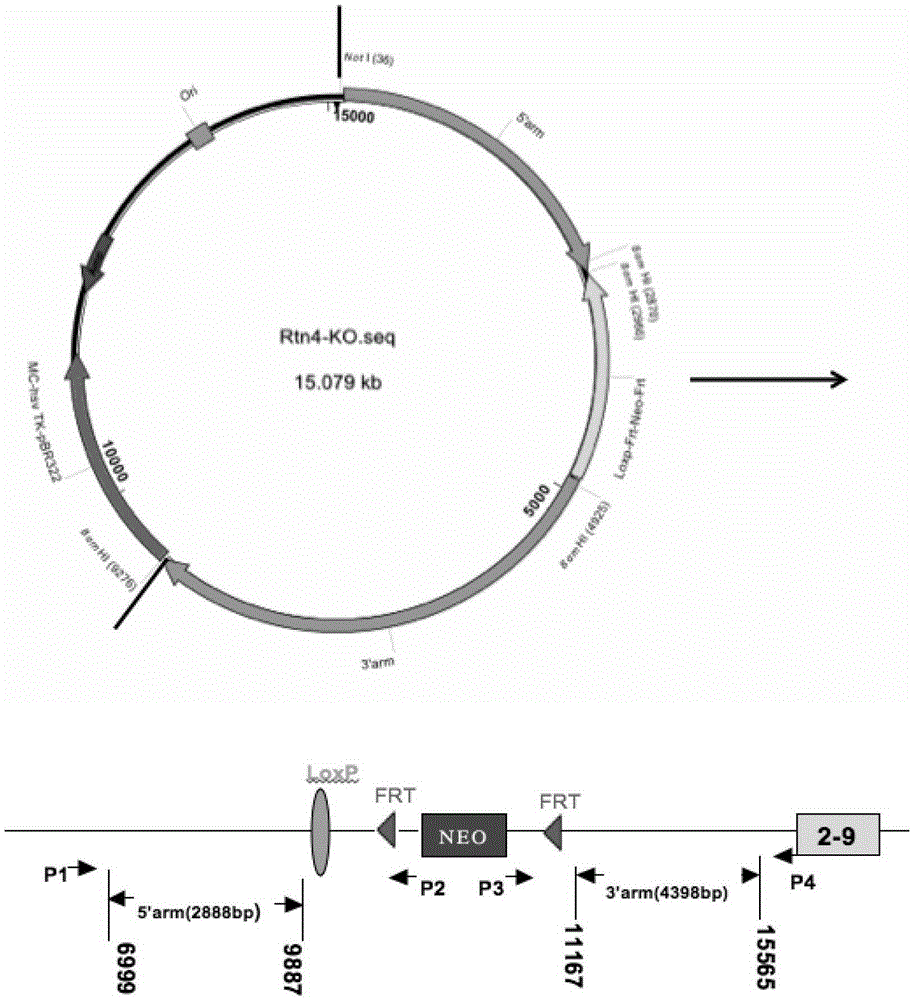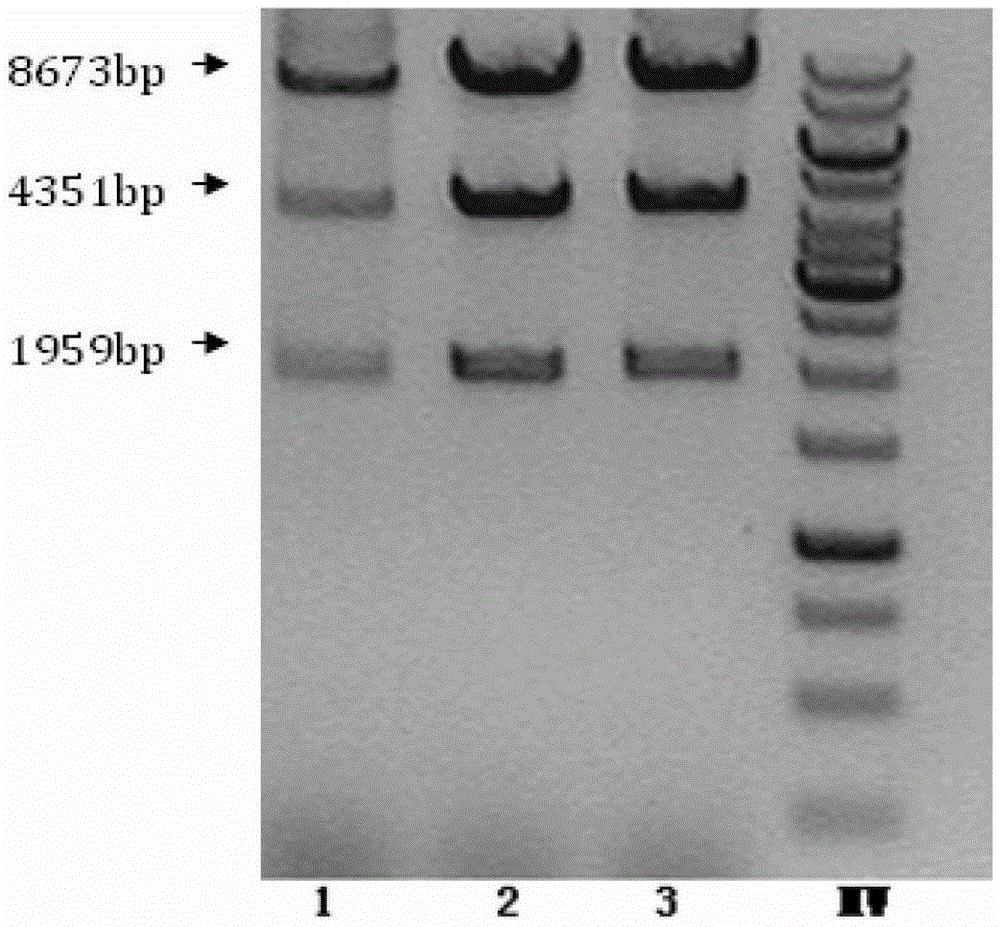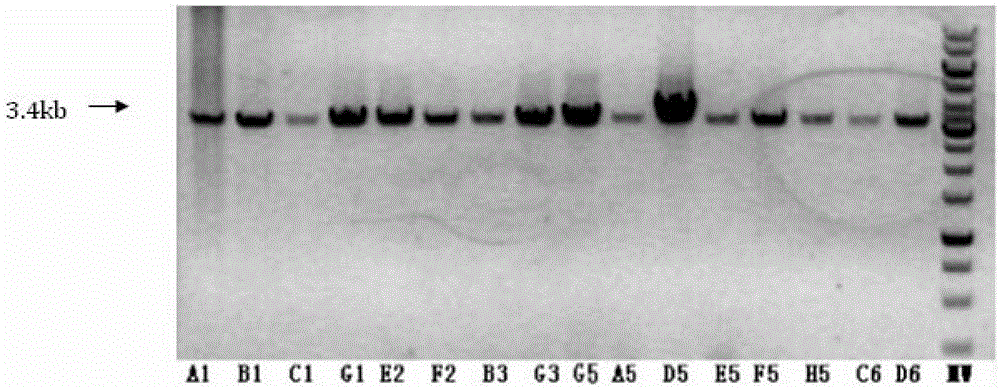A mouse rtn4-a/b gene knockout method
A gene knockout, rtn4-a technology, applied in recombinant DNA technology, introduction of foreign genetic material using vectors, etc., can solve problems such as unclear mechanism of action
- Summary
- Abstract
- Description
- Claims
- Application Information
AI Technical Summary
Problems solved by technology
Method used
Image
Examples
Embodiment 1
[0026] (1) Recombinant plasmid preparation: use BAC vector (BAC: pBR322) to target rtn4-a / b gene (EnsemblGeneID: ENSMUSG00000020458). The 5' and 3' arms homologous to the Rtn4-a / b gene and the expression cassette marked with the NEO resistance gene were knocked into the BAC targeting vector to replace the rtn4-a / b gene region to be knocked out. Wherein, the Frt sequences at both ends of neo can be recognized by Flp recombinase to delete the neo gene. The 5'arm contains 2888bp bases, and the 3'arm contains 4398bp bases ( figure 1 ). 100 μg of Rtn4-A / B-KO plasmid DNA was linearized with NotI (enzyme dosage: 150 U), the enzyme digestion system was 1500 μl, digested overnight at 37°C, treated with equal volumes of phenol chloroform and chloroform, precipitated with absolute ethanol, and washed with 1000 μl sterile PBS Resuspend the linearized plasmid DNA for later use. The constructed homologous targeting plasmid was digested with BamHI and electrophoresed as follows: figure ...
PUM
 Login to View More
Login to View More Abstract
Description
Claims
Application Information
 Login to View More
Login to View More - R&D
- Intellectual Property
- Life Sciences
- Materials
- Tech Scout
- Unparalleled Data Quality
- Higher Quality Content
- 60% Fewer Hallucinations
Browse by: Latest US Patents, China's latest patents, Technical Efficacy Thesaurus, Application Domain, Technology Topic, Popular Technical Reports.
© 2025 PatSnap. All rights reserved.Legal|Privacy policy|Modern Slavery Act Transparency Statement|Sitemap|About US| Contact US: help@patsnap.com



